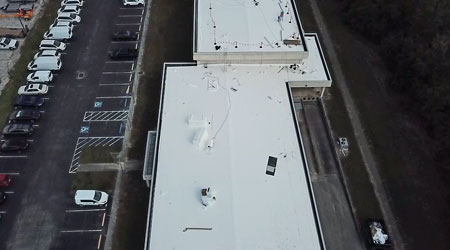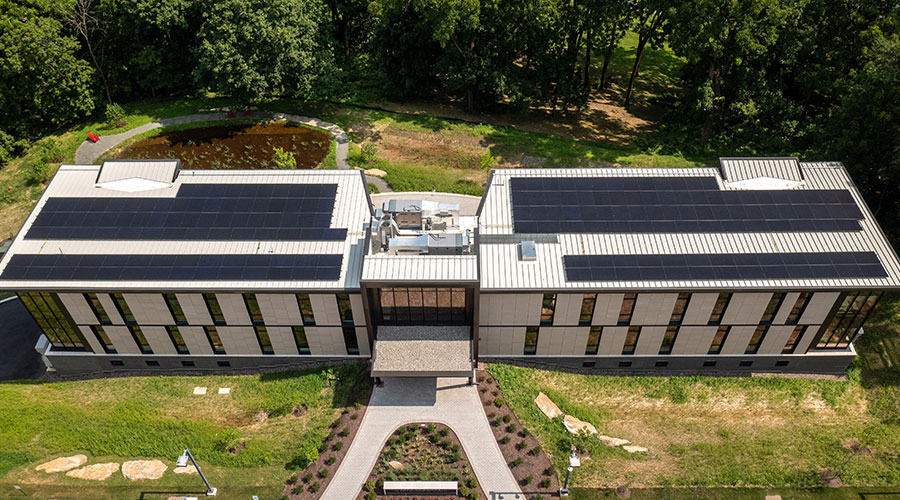 Pasco County, Florida, covered the original metal roof on the Jack Alberts Records Retention Facility with a single-ply system.Pasco County, Fla.
Pasco County, Florida, covered the original metal roof on the Jack Alberts Records Retention Facility with a single-ply system.Pasco County, Fla.Savvy Strategies for Roof Maintenance and Replacement
Here's an inside look at a Florida county’s program to maximize roof performance life.
Florida doesn’t make roof maintenance easy. Hurricanes. Rainy season. Hot weather. Humidity. All of these factors conspire to take their toll on institutional and commercial facilities, especially roofs. As a result, maintenance and engineering departments responsible for ensuring the condition and performance of roofs have a constant challenge on their hands.
“We fight weather all the time here,” says Jessie Bednarik, operations and maintenance manager for Pasco County, Florida. “We have horrific driving rains during the rainy season. The hurricane issues during the latter part of the year are pretty rough on us — the anticipation of the hurricane and then actually getting hit by it. So we have to be cognizant that the roofs are in tip-top shape.”
All roofs eventually require more than just an inspection, though, and for Pasco County and most other facilities departments, one major challenge involves determining when the time is right to stop repairing a roof and replace it.
Managing a portfolio
Pasco County, which is located just north of Tampa on Florida’s Gulf Coast, has an extensive portfolio of roofs to oversee.
“We have approximately 2.8 million square feet of space spread out over 500 buildings,” says Andrew Baxter, the county’s facilities management director. “The valuation of the property is $1.6 billion work of facility assets that we’re responsible for maintaining.” The department also is responsible for all county real estate transactions, construction and renovation, and operations and maintenance for county facilities.
The process of identifying potential roofing projects starts with assessing a host of data points.
“Every year, we put together a list of our non-capital improvement projects” or non-CIP, says T.J. Pyche, the county's construction and renovation manager. “We look at all the work orders, how many roof leaks we have, how old the roof is, and if it’s on a warranty. All of those things come into play when we sit down to grade all the non-CIP projects based on those parameters.
“Then the administration says, ‘You have X amount of dollars,’ and there’s a long list and a cut-off line. If it’s above the cut-off line, it gets done, and if it’s below the cut-off line, we roll it over until the next year.”
Adds Baxter, “When we do that scoring, that’s really a critical component of how we rank all of our projects every year. We look at the age of the building or the piece of equipment we’re replacing — in this instance, the age of the roof — the condition of that roof, the necessity for that piece of equipment.
“When we say necessity, we mean would service be interrupted if that piece of equipment failed in some major way. We also look at life safety and regulatory compliance as factors. We rate each one of these on a scale of 0 to 10 to rank each of our projects every year.”
Related Topics:













